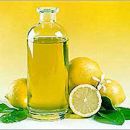Aromatherapy -Different Essential Oils And Their Uses
Different Essential Oils And Their Uses:

3. Benzoin (Styrax benzoin):
Origins: In the Far East the gum from the benzoin tree was one of the main ingredients used in incense to drive away evil spirits. The compound tincture is highly potent, pharmaceutically used in friars balsam and as a fixative in perfume.
Description: The benzoin tree is cultivated in Borneo, Java, Malaysia, Sumatra and Thailand. Like the rubber tree, its gum is taken from the bark by making a deep incision in the trunk. The gum is dark, with reddish-brown colored streaks. These pigments contain fatty oils which exude a delicious aroma similar to vanilla.
Therapeutic Effects: Valuable for treating urinary infections. It has a warming, relaxing, action suitable for respiratory conditions such as bronchitis, coughs and colds. Also effective for relieving skin conditions, and for gout.
Uses: Inhalation, massage and in cough medicines. This is an energizing oil that can be used in one of two forms: simple tincture or compound – the former is not so toxic and is preferable for skin conditions.

4. Bergamot (Citrus bergamia):
Origins: Native to Morocco, it wasn’t until bergamot rooted in Italy that its essential properties were recognized.
Description: The bergamot tree belongs to the same family as the orange tree and the essential oil, as in most citrus varieties, is expressed from the fresh peel of the fruit. The oil is emerald green in color, and smells spicier than lemon but with a similar, citrus quality. The odour is familiar from its use as a flavoring in Earl Grey tea.
Therapeutic Effects: Has a powerful uplifti8ng and refreshing action. As an antiseptic it has proved effective in the treatment of mouth and skin infections, and sore throats. Can lower fever, and help with bronchitis and indigestion.
Uses: Bergamot blends well with most essences and is a popular top note in perfumery. Along with neroli and lavender it is a main ingredient in eau-de-Cologne and is commonly used in toiletries to refresh and relax. In massage it can stimulate or soothe depending on the oils with which it is mixed.
Cautionary Note: In concentrations above one percent it can irritate the skin. Also, even though it is sometimes added to commercial suntan agents to stimulate melanin production, it must never be used in home mixtures for tanning purposes.

Essential Oils And Aromatherapy – Essential Oils And Their Uses